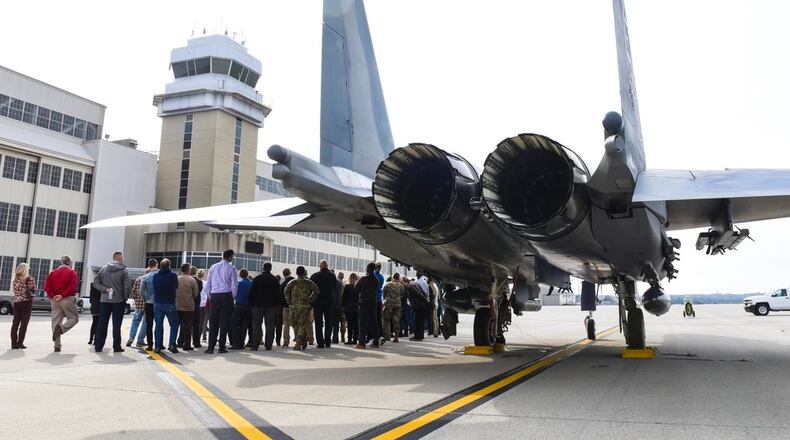Chief among the proposed changes would be the creation of an Integrated Capabilities Command, led by a three-star general, which would identify the Air Force’s future needs.
Language approved by the Appropriations Committee and passed out of Congress last month says that, to date, the Air Force has “not provided thorough justification for this reorganization, a comprehensive implementation plan or detailed budgetary information necessary for the subcommittees to assess this plan.”
Thirty days before making organizational changes, the language requires the secretary of the Air Force to provide Congressional defense committees “a notification describing how the current organizational construct differs from the proposed construct; a proposed phasing of this reorganization along with cost estimates to implement each phase; a proposed laydown of new offices, commands or centers and whether the strategic basing process is required for their establishment.”
The secretary is also expected to shed light on the impacts on military and civilian jobs by location.
The comptroller general was also directed to report to House and Senate Defense Appropriations subcommittees on the proposed reorganization not later than 180 days after the act’s passage.
U.S. Rep. Mike Turner, R-Dayton, is a senior member of the Armed Services Committee (as well as chairman of the House Permanent Select Committee on Intelligence). He has expressed confidence that Wright-Patterson Air Force Base would fare well in an Air Force reorganization.
“I spoke with the chief of staff of the Air Force, Gen. (David) Allvin,” Turner told this newspaper in February. “Gen. Allvin gave me absolute assurances that these changes would have no negative impact on Wright-Patterson Air Force Base and could result in a positive impact on Wright-Patterson Air Force Base.”
Turner emphasized at the time that the changes being discussed are meant to help the U.S. keep up with foreign adversaries such as Russia and China; they are not part of a much-dreaded Base Realignment and Closure (BRAC) process.
“This is not a BRAC,” Turner said in February.
With some 35,000 military, civilian and contractor employees, Wright-Patterson is the largest single-site concentration of employment in the state of Ohio. The base is home to Air Force Materiel Command (AFMC), which employs nearly 86,000 airmen and civilians worldwide and manages $71.3 billion of budget authority.
AFMC recently offered new details on how the organization is expected to affect the sprawling command. The most notable change at Wright-Patterson is the redesignation of the Air Force Life Cycle Management Center to the “Air Force Air Dominance Systems Center.” And AFMC will oversee seven mission-focused centers instead of the current structure of six.
The new, seventh center will be the Air Force Information Dominance Systems Center. The current Air Force Nuclear Weapons Center will become the Air Force Nuclear Systems Center, retaining its focus on nuclear deterrence, with a new program executive office, focused on intercontinental ballistic missiles, to be headed by a two-star general.
In a statement late last week, Turner said: “I’m concerned that the Air Force has not completed a sufficient analysis of its re-optimization proposal. I appreciate that the House Appropriations Committee has begun the oversight to review the Air Force’s proposal, its effectiveness, and potential impacts.”
Mark Cancian, a retired Marine colonel and a senior adviser with the Center for Strategic and International Studies’ International Security Program, said that at a time when the Air Force wants to get smaller, members of Congress may want to oversee the reorganization carefully. In the Air Force budget unveiled in March, the service revealed plans to divest 250 aircraft in fiscal year 2025, shrinking its aircraft inventory to below 5,000 planes.
“That’s not very heavy-handed,” Cancian said of requirements imposed by the new language. “If Congress wanted to be heavy-handed, they could do two things. One is, they could require an outside analysis, which they do sometimes.”
Congress might also have imposed strict spending restrictions on the reorganization process, he added.
“Asking for reports is relatively common,” he said. “There’s no question that members would be concerned when they (the Air Force) talk about moving organizations around, consolidating, that they could be losing jobs in their districts.”
“As the Department of the Air Force develops implementation plans, leaders will continue to share information with congressional staffs,” Air Force spokeswoman Ann Stefanek said when asked about the Air Force’s reaction to the language.
Messages seeking comment were sent to representatives of both Democrats and Republicans on the House Appropriations Committee.
About the Author

